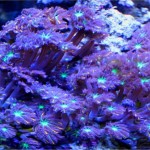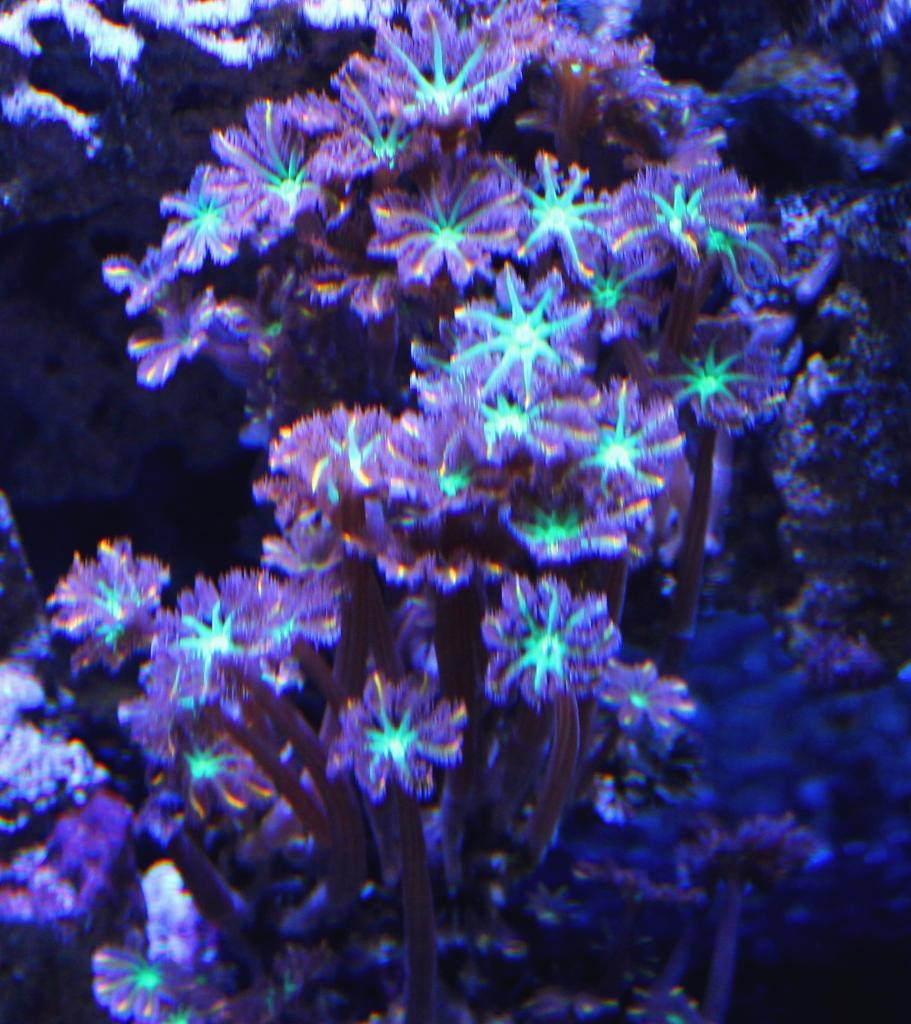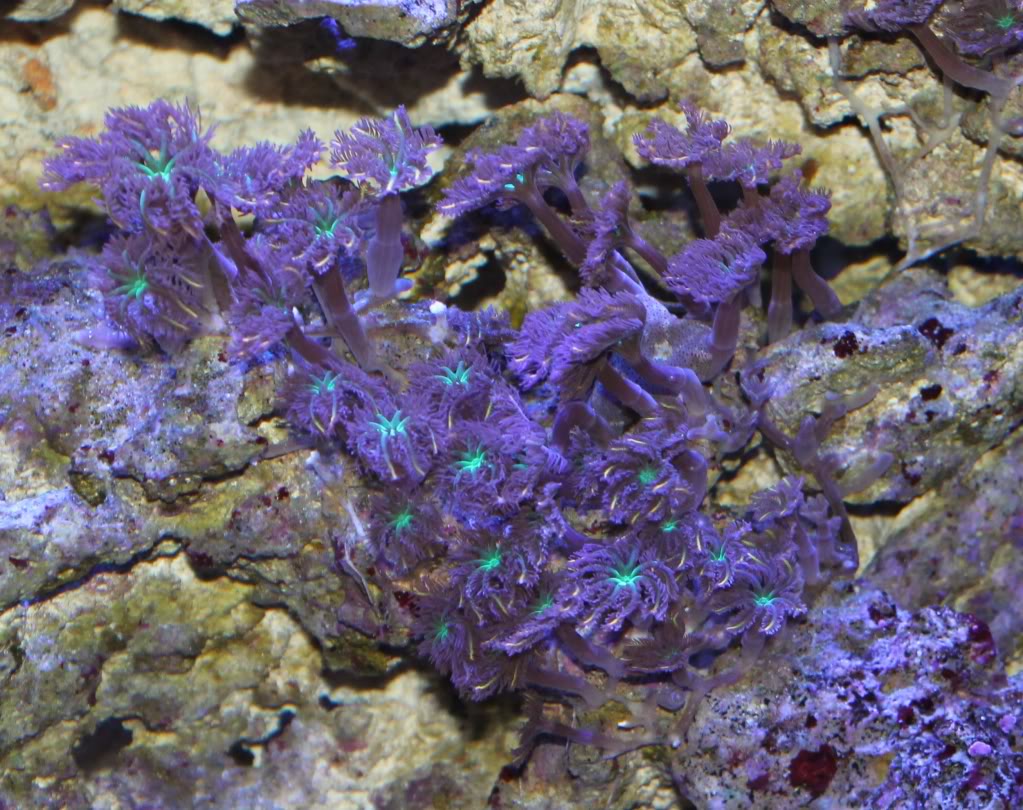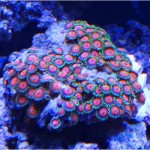Tag Archives: clove polyps

Clove Polyps
Scientific Name: Clavularia Sp
Common Name: Clove Polyps.
Type of Coral: Softie
Lighting: Moderate and Moderate to Low
Flow: Moderate and Moderate to Low
Care Level: Easy
Temperament: Peaceful
Appearance
They only get to about 2 to 3 inches in height and have a head size of about ½ to ¾ inch. These two can have slight color variations. The heads can have a bright almost neon coloring to them while the tentacles branching off the heads can have a colored line running down the center of them that may or may not have different coloring as compared to the coloring in the center of the head. In contrast, some glove polyps will only have one solid color throughout the whole coral. The heads can retract into the base of the coral making it look like a purple lumpy spot on your rocks.


Water Conditions
The below link highlights typical water conditions clove polyps will require. I have had the best luck when they were kept in water with around 1 ppm of nitrate when lighting and flow requirements were meat and all other water parameters in line as described in the below link.
https://www.reefaquarium.com/2013/the-basics-of-marine-aquarium-water-parameters/
General Information
Clove Polyps are colonial type corals, meaning they form a colony of many individual polyps all connected together. As they do not have a calcified skeleton structure, they can be more tolerant of swings in the alkalinity, calcium, and magnesium when compared to other corals. However, they will not be very tolerant to swings in pH, Temp, or salinity which is no different than any other coral or fish..
Clove polyps are a very hardy soft coral placing them amount the easier to keep corals and making them an excellent choice as corals for beginners. They have also been known to grow very fast, almost like an invasive coral. Clove polyps are also the least aggressive when it comes to defensive abilities. They can quite frequently become damaged and even start losing heads when they fall victim to another coral’s sting or exposed to those toxins.
As with all corals, the exterior slime coating can be a skin irritant or even highly toxic to humans so please, handle all corals with care. I would recommend wearing rubber glove whenever you handle corals
Fragging
Clove polyps can be easily fragged with very high success

Good Corals for Beginners: Zoanthid and Palythoa
Zoanthid and Palythoa are both colonial type corals, meaning they form a colony of individual polyps all living together. They are commonly referred to as zoas and palys. As they are very similar corals, I have combined them into one article. Zoas and Palys are both very hardy soft coral placing them amount the easier to keep corals and making them a excellent choice as corals for beginners. These corals can come in some spectacular colors and color combinations, among the most amazing colors to be found in any soft coral. For these reasons, they are kept by advanced and new hobbyist alike. I have also added star polyp corals and glove polyp corals into this article as they are also colonial corals with very similar requirements and hardiness when compared to zoas and palys. The below will outline the requirements to keep these corals healthy and thriving in your tank.